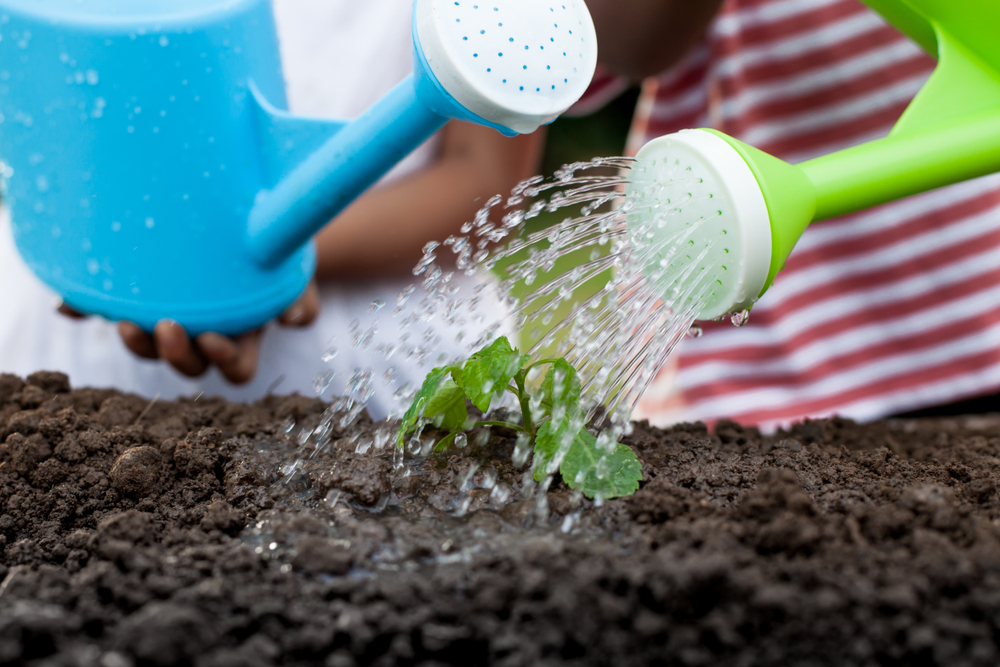It’s easy to feel sorry for tomorrow’s generation, and the challenges they’ll have facing them as they grow into keepers of the planet. Global climate change is causing major problems around the world, and efforts to move towards sustainable food and energy sources are going far more slowly than they need to. The “Zoomers,” as this younger generation is referred, as well as the kids who will follow them, are going to have a lot on their plate when it comes to upholding the conservation and preservation of our ecosystems.
To help them in their endeavors, we can make sustainability an important part of their education – with gardening as an essential introduction and Step 1 in this process. Spring is just around the corner, so it’s planting season, and a great chance to introduce children to the idea that food and other perishables don’t have to come from a store.
Introducing Children To Gardening And Sustainable Living
1 – The right tools for the job

If you’re going to introduce children to gardening, the best way is to do so in their own size, since typical “grown up” tools are going to be far too large for them to manipulate. For little ones, we offer a Preschool Gardening Tools Kit that are real tools of the trade…only smaller. Made from wood and metal, just like full-sized tools, they are entirely functional. And don’t forget the child-sized gardening gloves to complete the outfit and protect tiny hands.
2 – Observing the growing process

Gardening can seem obscure to young children that don’t understand the process, so it helps if kids can get a clear idea of what’s going on. That’s why projects like the Sprout & Grow Window and the Root Observation Station are powerful educational resources. By growing plants inside an entirely clear plastic enclosure, children can see the entire process happen right in front of them. They can record each day’s findings and make it easier for them to visualize what’s happening underground with their own gardens.
3 – Making their own food

If you’re lucky enough to be on fertile land, (or cultivate an urban garden in boxes and pots) the best way to teach kids farming is to do just that – start a farm. Some easily-grown vegetables and tubers are great starter plants. Nature Watch offers an Herb Garden Greenhouse Kit that has everything you need to grow a small herb garden anywhere, producing real herbs that the kids can incorporate into meals and enjoy using their own sustainable foods.
4 – Sustainability is a cycle

Of course, growing and eating food is only part of the process – there’s also the decomposition that follows, and the return of nutrients to the land. This too can be visualized and explained with a See-Through Composting Container. This is an excellent ongoing project, adding organic material as needed, and gaining real fertilizer as a result. This kit also includes a few science projects, such as examining how heat contributes to the decomposition process, giving older children the chance to learn advanced activities.
5 – The whole KIT and Kaboodle

If you’re looking for the easiest way to guide schoolchildren through the basics of gardening and organic sustainability, we highly recommend the award-winning Garden Of Learning program. Using this program you can build an outdoor classroom where science and nature concepts come alive. It’s the best-selling eco-literacy program among American schools, and it’s a great way for schools of all sizes to implement a full year’s worth of classes.
Nature Watch: Your Top Choice for Gardening Craft Kits for Kids
Nature Watch encourages children of all ages to get in touch with their natural surroundings. With activities that foster a love of the outdoors and environmental sciences, educators trust Nature Watch to provide the most engaging crafts and accessories to make learning fun, including sustainability and gardening craft kits for kids. Our craft kits come with everything you need including activities for several children, instruction manual, and helpful illustrations. Click here to see our full range of nature education materials, books, and other teaching tools.


